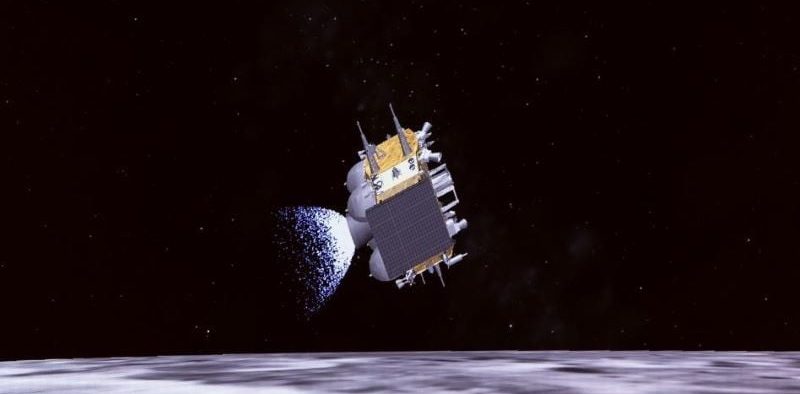Chinese probe lifts off from moon’s far side carrying lunar rocks

China’s national space agency said on Tuesday that the Chang’e-6 probe has begun its journey back towards Earth after taking off from the moon’s far side.
China is getting closer to being the first nation to return samples from the far side of the moon, which is always facing away from Earth, thanks to the probe’s successful exit from the moon.
The probe successfully finished gathering samples from June 2-3 and left the moon at 7:38 am local time (2338 GMT).
According to a statement from the China National Space Administration (CNSA), Chang’e-6 “withstood the test of high temperature on the far side of the moon.”
According to CNSA, Chang’e-6 faced an additional technical challenge in operating without direct communications with ground stations on Earth, in contrast to its predecessor Chang’e-5, which collected samples from the near side of the moon.
Rather, communication with the probe was handled by the relay satellite Queqiao-2, which was launched into orbit in April.
According to state news agency Xinhua, the probe dug up soil on and beneath the moon’s surface using a drill and robotic arm.
Following sample acquisition, Chang’e-6 flew China’s national flag on the moon’s far side for the first time, according to Beijing Daily.
As of Tuesday morning, CNSA reported that the probe is in lunar orbit and will soon join up with another spacecraft in orbit.
After that, the samples will be loaded onto a return module that will take off again for Earth and land somewhere in Inner Mongolia, China, on June 25.
Scientists from all around the world are keeping an eye on the lunar samples as they return to Earth in the hopes that the soil gathered by the Chang’e-6 will provide insight into the solar system’s origins.
The mission has been a source of pride for the country and has also been closely monitored at home. Thousands of visitors descended upon various viewing locations in the province of Hainan, a southern island, last month to witness the launch of Chang’e-6.
Images of a hole that Chang’e-6 left behind during the sample excavation on the moon’s surface went viral on Weibo, the Chinese social media platform, on Tuesday. The hole’s shape was described as “Zhong” by state broadcaster CCTV, a reference to the Chinese term “Zhongguo,” which means “China.”

I am a dedicated student currently in my seventh semester, pursuing a degree in International Relations. Alongside my academic pursuits, I am actively engaged in the professional field as a content writer at the Rangeinn website.








